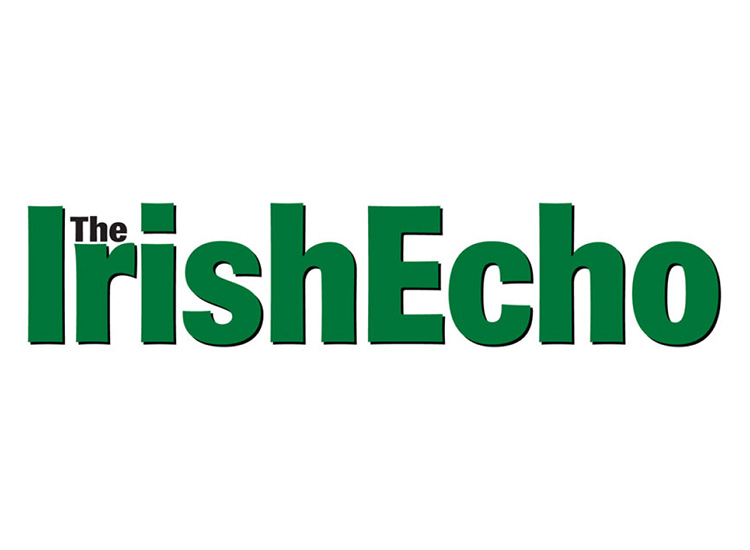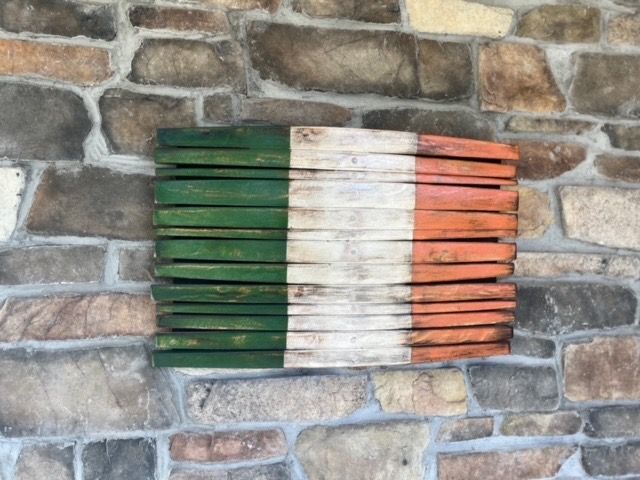Paul Gorry is a leading Irish genealogist. He’s pictured here browsing in the history section of Eason’s, O’Connell Street in Dublin. PHOTO BY PETER MCDERMOTT
By Peter McDermott
Yet to take the leap into your family’s past? It’s easy to start, the experts tell us. With just a few keystrokes you can be connected with your ancestors. If some or all were living in Ireland during the first decade of the 20th century, for example, then an excellent place to find them with relative ease is at www.census.nationalarchives.ie. At first you’ll encounter family census information transcribed into typed format, but another click will reveal the same details in hand-written format, taken by an enumerator 107 and/or 117 years ago from a family member, whose signature appears at the bottom of the form. (See the 1911 census return for one Dublin family at the end of this piece.)
To help you get a start on your roots search, we asked some genealogists – dedicated professionals as well as enthusiastic and experienced amateurs – to reveal some of their favorite websites, both free and subscription-based.
Paul Gorry has been a leading Irish genealogist for more 30 years and is a founder member of Accredited Genealogists Ireland. He lives in Baltinglass, Co. Wicklow.
There is now an array of databases or complete websites devoted to Irish ancestral research. I find it difficult to choose a favorite among them as they all have their particular uses (or at least most of them do). Getting to know their differences, their quirks and their limitations has become part of doing Irish genealogy.
If I am forced to make a choice of databases, I suppose I would go with the 1901 and 1911 Census returns database www.census.nationalarchives.ie which is free online from the National Archives of Ireland. Why do I like it? Well, maybe because though has its flaws those flaws are now so familiar that they can be anticipated and avoided. It also has many ways of manipulating the data (missing from some commercially-produced databases) but most of these are hidden under the “More search options” button that many people don’t even notice.
An important aspect of genealogical research is understanding the geography of where your ancestor originated and it can be a much more personal experience when you can pinpoint exactly where the family lived. The most precise official land division in Ireland is the townland, which is rural rather than urban and which basically consists of a cluster of farms. Townlands are grouped into (civil) parishes and then counties. The IreAtlas Townland database on www.thecore.com/seanruad is a really good source for identifying place-names. If you just enter the parish name you get a list of all townlands within it. It’s important to understand that Roman Catholic parishes don’t necessarily cover the exact same area as civil parishes and don’t necessarily have the same name.
Perhaps my favourite website associated with Irish ancestral research is the Ordnance Survey of Ireland’s map viewer http://map.geohive.ie/mapviewer.html which allows you to home in on any part of Ireland (the Republic only – there is a new site for Northern Ireland but it’s less user-friendly). You can go right down to townland level (present day) and then, using the ‘Base Information and Mapping’ tab, change to other views. The most useful are the Historic Map 25 Inch (from c1900) and the Historic Map 6 Inch Color (from c1840). On the color map the townland, parish and county boundaries are highlighted.
Often people concentrate too closely on the county an ancestor was from, forgetting that the boundary between two counties was no more than a hedge, a ditch, a stream or a river. Looking at these maps can open your mind. For instance, Gulladoo, Co. Leitrim (in the province of Connacht), Corhanagh, Co. Cavan (in the province of Ulster) and Fihoragh, Co. Longford (in the province of Leinster) are three adjoining townlands.
Patricia Phelan is a professional genealogist based in Freeport, N.Y. She was editor-in-chief for six years of the award-winning Newsletter of the Irish Family History Forum and is now contributing editor. Additionally, she has for many years served on the board of directors of the IFHF.
www.familysearch.org: This free site is indispensable to both my professional and personal genealogy research. According to Wikipedia, it’s “the largest genealogy organization in the world. FamilySearch maintains a collection of records, resources, and services designed to help people learn more about their family history. FamilySearch gathers, preserves, and shares genealogical records worldwide. It offers free access to its resources and service online at FamilySearch.org, one of the most heavily used genealogy sites on the Internet.”
www.irishgenealogy.ie: This free website allows you to search for church records from Carlow, Kerry, Dublin, and the diocese of Cork and Ross, as well as certain Irish civil birth, marriage, and death records.
Calendars of Wills and Administrations, 1858–1920: Free at Irish National Archives website. Entries provide “Name, address, occupation and financial effects on death of testator (person who made the will); Date of death of testator; Date and place of probate of will or grant of letters of administration; Name(s) and address(es) of executors/beneficiaries of the will, and relationship, if it exists, to testator; Marital status of all women mentioned.”
[caption id="attachment_96560" align="alignnone" width="282"]
Finally, the New York archdiocesan sacramental records online at FindMyPast have been a godsend to New York Irish researchers. The archdiocesan records to me are the biggest news this year. Until they went on FindMyPast, there was no easy way to determine what Roman Catholic church an ancestor married or was baptized in. It was hit and miss. With the FMP records, I solved a couple of decades-old brick walls in my own family research, as well as found great new info for my clients.
FindMyPast is a paid site. Other paid sites I rely on are Ancestry, Newspapers.com, RootsIreland (Irish sacramental records), GenealogyBank, Fold3, and others. Free sites I often consult are BrooklynNewstand (for old Brooklyn newspapers). Irish National Archives for 1901/1911 census and other records, and others.
New York resident Michelle Blankenship is a literary publicist and genealogist.
I like these: www.findagrave.com and www.castlegarden.org. And as for subscription, of course Ancestry.com. I find it indispensable.
Tom Myles, of Oakdale, N.Y., has been an active genealogist for 20 years. “Several people have told me I could get paid for what I do,” he said. “My standard reply is, ‘Then it would be work.’ I often voluntarily assist others, friends or other people needing assistance.
“I have been to Dublin, and to Carrick-on-Suir and Clonmel in Tipperary where I have traced two sets of great-great grandparents. I have developed a big interest in rural Jones County, Iowa where distant relatives settled in 1847 and where I have met 7th cousins, our common ancestor being born in Huntington, NY in 1670. In Jones County, I am referred to as ‘The Legend.’
“Perhaps the best ‘payment’ I received was after helping someone who was trying to become a member of the Daughters of the American Revolution. She wrote to me, ‘You're my hero!’”
Besides ancestry.com, I use many genealogy websites. findagrave.com: Excellent resource, particularly in rural areas. If you locate one relative, chances are other relatives are buried in the same cemetery. usgenweb.com: The site is further delineated by county. Each U.S. county has a volunteer coordinator. Depending on the county, there can be a tremendous amount of local information including state censuses, birth and death registries, cemeteries, and biographies.

Tom Myles assisted one woman in her efforts to become a member of the Daughters of the American Revolution.
Many local libraries have genealogy collections as well as remote access online to many genealogy resources. Google books: if one is researching someone who was prominent enough to be mentioned in a publication, this is an excellent resource. familysearch.org: Provided by The Church of Jesus Christ of Latter-day Saints.
Maureen O’Connor is a New Zealander who “first became interested in family history research about 20 years ago when my father talked about the possibility that we were descended from a convict transported to Australia from Ireland in the 1800s.”
She added: “Back then research was a laborious business conducted in almost total silence in library research rooms and archives, and collaborating with family meant writing letters and a lot of photocopying.”
In 2010, she moved to Australia and last year began a Diploma of Family History with the University of Tasmania “as this was a wonderful opportunity to gain formal qualification in what has been my hobby for many years.”
O’Connor said: “I have learned a great deal in this study, especially about contextualizing our family histories by researching not just their names and important dates but also how they lived and interacted with each other, and understanding what motivated and drove them.”
I don't have a favorite website for my genealogical research as they each offer something slightly different. I use Ancestry.com as my 'primary' family tree site and this is also the site I used for my DNA research. I can probably do this on other sites too, but Ancestry has a simple uncluttered look and feel which I find very easy to use. It does allow people to very easily copy research done by others without any need to verify the information is correct and for me this is Ancestry's major downfall. On the plus side I can add my own citations for information I have found elsewhere. I am also able to create multiple 'secret' family trees and collaborate with others on the same tree. This is important when I am trying to figure out how somebody might fit in a family or to connect two families who share DNA.
For Irish records I often use FMP (Find My Past) https://search.findmypast.co.uk as this will often give me access to images of the original records rather than just a transcription. I also use this site for researching in historical newspapers, especially where I am looking for contextual information about a town or region, or perhaps if I am trying to understand a major event in a region like political conflict or natural disaster. This site has Irish Newspapers which is fantastic. Historical newspapers are the very best place to go for information other than the standard births, deaths or marriages dates. Court reports, obituaries, sports reports, write ups about dances and social gatherings and weddings will all offer insight into how a family interacts with the community, and often will give you a name variation or two families together that helps you figure out family structures. Often information I find here will lead me to locate important records in Archives which I can then purchase.
For Irish births deaths and marriages I use Irish Genealogie.ie https://www.irishgenealogy.ie/en/ This is a really lovely site I use frequently as I am able in many instances to view the original records. This gives me the opportunity to transcribe the record myself as often not everything is transcribed or there may be variations in spelling, or a physical address I can locate.

This form from the National Census, 1911, shows Luke Malley, a County Mayo-born civil servant, living at 7 Iona Drive, Glasnevin, Dublin, with his wife Marion, who was from Roscommon. They were Catholic and had a proficiency in both Irish and English. The couple told the enumerator they had nine children, all of them still living and all listed here along with two female servants, who were both 18 years of age. The second oldest child is Ernest Bernard, 13, who was later better known as the revolutionary and author Ernie O’Malley. For information about Luke Malley's family in the 1911 census, go here.










